09 Jan Turtle Hatchlings
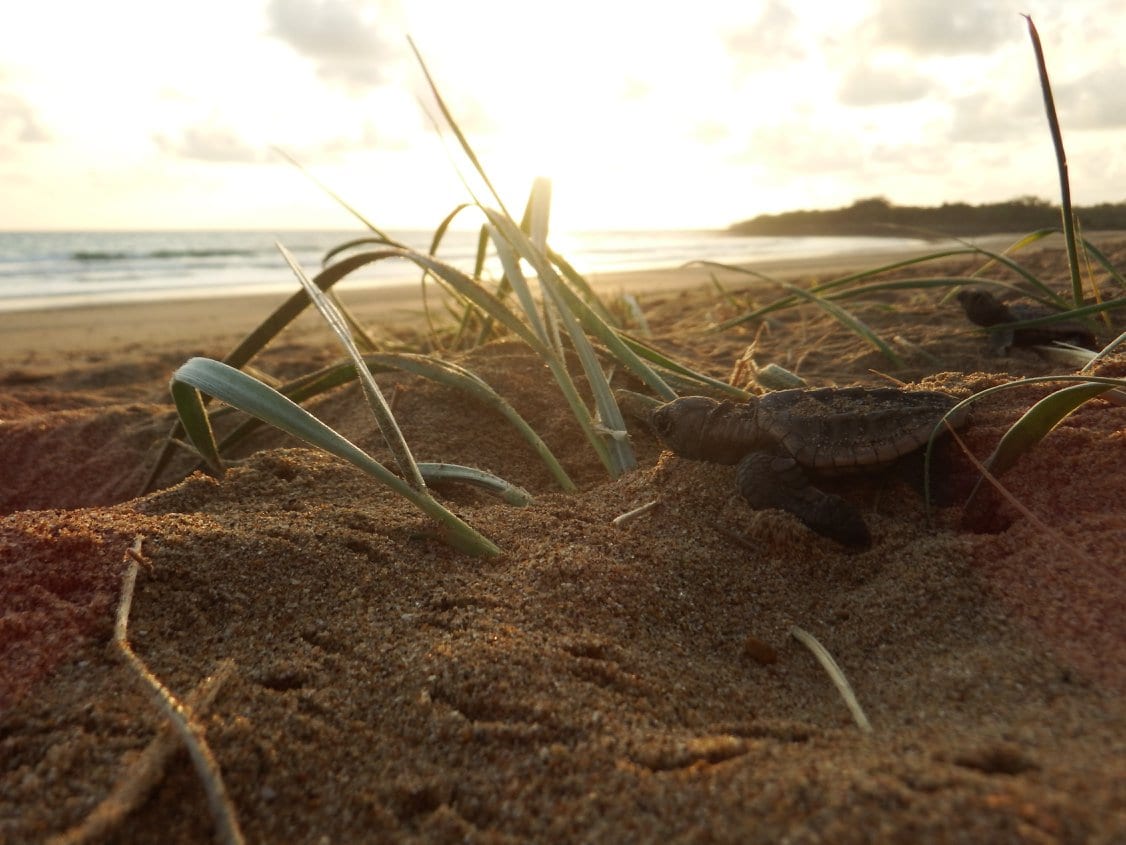
The mad dash
For 8 weeks, along the edge of our shores, hundreds of baby turtles have been hiding under the sand. They have been waiting for just the right moment to make the most dangerous journey of their lives. These baby reptiles must wait for a perfect tide with just the right amount of light, to break free from their damp chamber in the ground. With no parental guidance turtle hatchlings must follow their instincts to dodge hungry predators, avoid the burning hot sun and learn to navigate the Pacific Ocean.
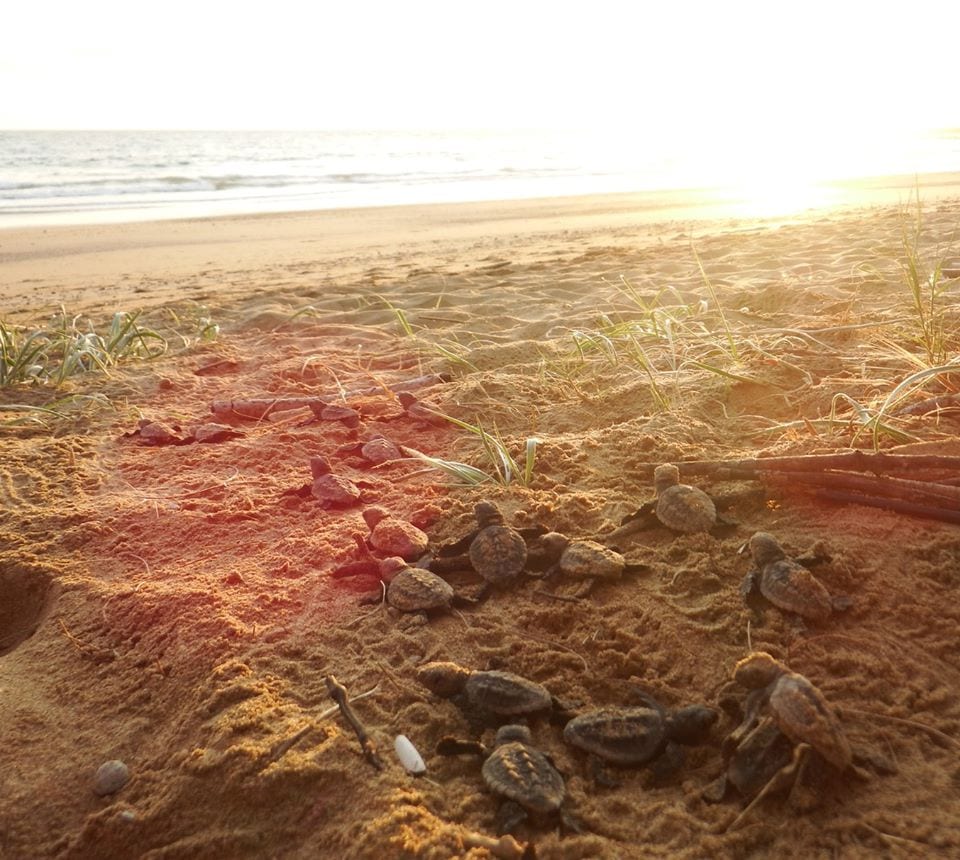
Loggerhead hatchlings climb over each other as they race to the water at Mon Repo Turtle Research Centre
Need to find their own way
Would you believe that 90% of sea turtles will return to nest on the exact same beach as which they hatched upon. This is called natal homing. An iron compound in the turtle’s brains allows them to perceive the earth’s magnetic fields. The coordinates of the unique magnetic field that exists in their natal area is basically etched into their memory, known as a geomagnetic imprint. (As if turtles couldn’t get any cooler, they are now a living GPS!). It is very important for turtle hatchlings to find their own way into the ocean. There is the possibility that if they are picked up and placed in the water, the initial plotting on their internal GPS could be compromised.
Cut the glow
Scrambling out from their nest, the hatchlings instincts attract them to light. Ideally that light is the moon shining on the water’s surface, acting like a guide to the ocean. Sadly, they can also follow artificial light like streetlamps, car lights, security spotlights and even city lights reflected in a cloudy sky. This is how hatchlings can end up misguided towards roads, houses and town centres. So, whether you live beside the beach or not too far away, it’s always a good idea to “cut the glow” and encourage others to follow.
Boys are cold, girls are hot
Like many reptilian species, the temperature inside of a turtle nest will determine the sex of the hatchlings. A nest incubated at 28 degrees Celsius or less will produce males only, where as a nest incubated at 32 degrees Celsius or above will produce solely females. Temperatures between these two will produce a mixed batch. With the added factor of climate change, many have been worried that the male population would suffer greatly. However, turtles haven’t managed to exist for thousands of years by mistake… In recent years several females have been recorded nesting during the autumn and winter months. Even a few have upped and left their natal area in preference of laying further down the coastline. Coincidence? We think not.
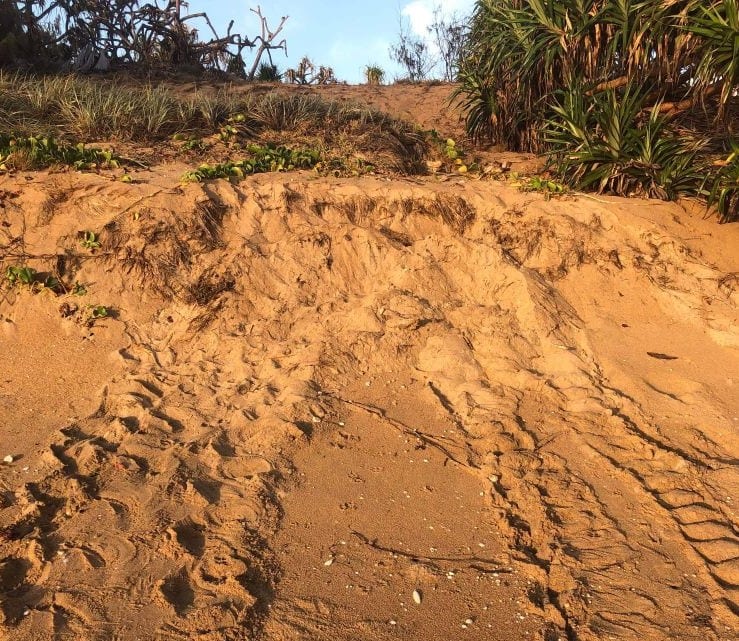
Turtle tracks leading up to a Loggerhead nest
Not all survive
Sadly, roughly only 1 in 1000 hatchlings will make it to adulthood. A lot of obstacles lay ahead of the hatchlings before they are safe. Many native animals rely on the hatchlings as a vital food source, like the white breasted sea eagle, osprey, Brahminy kite, gulls, crabs and lace monitor lizard. They are no safer when they enter the water, as many juvenile sharks await their arrival in the shallows and dolphins are more than keen for a bite sized turtle cookie. But never fear, a female will lay up to 8 nests during a nesting period. She can lay, depending on species, between 80 – 350 eggs in each nest (locally our turtles average 120 eggs per nest).
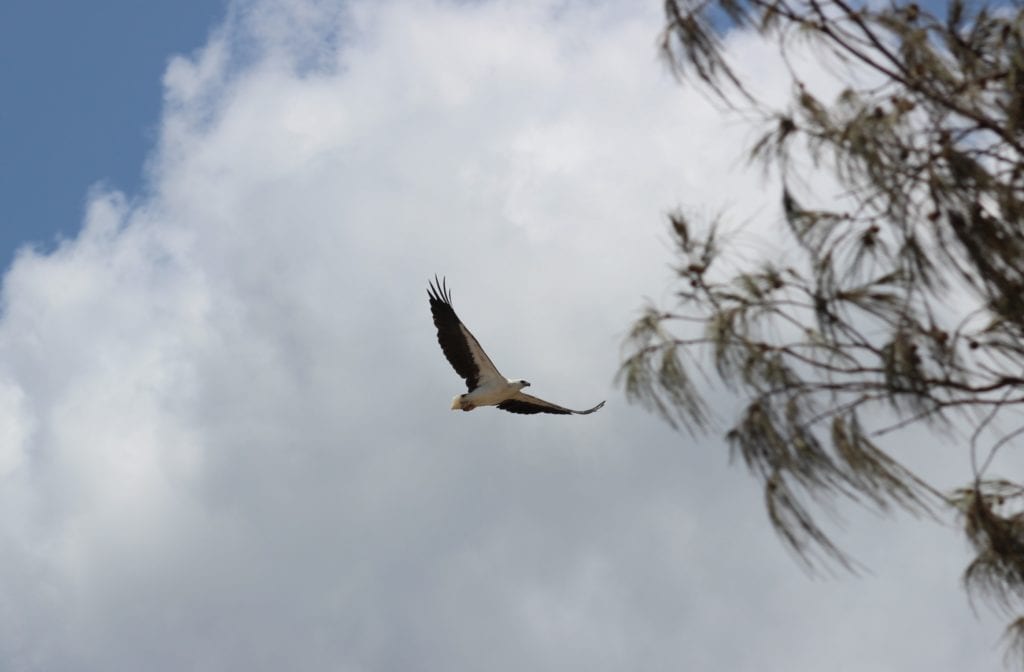
White Bellied Sea Eagle patrols the shoreline of Eurimbula National Park
What to do
If you come across a hatching nest the first thing you should do is report it to the local turtle research group. You can normally find their contact details at an entrance to a turtle nesting beach. This way they can log the details of the hatch, record movements, identify predation, and assist in the preservation of the turtle’s future. Then take a seat and watch these little cuties make their way to the ocean. You can even count them going in, this is great information to report. Take care not to interfere with the nest nor their natural predators. It’s very hard to watch a bird take a little one away but it is nature and part of their survival too.
Eyes open
The special amphibious vehicles at 1770 LARC! Tours take our lucky guests along the edge of some very remote turtle nesting areas and at this time of year our crew and guests are always keenly looking for signs of turtles activity during our usual tours. We record and report all turtle tracks, nests, hatchings and rescues. We feel privileged to be able to share this experience and information with our visitors.

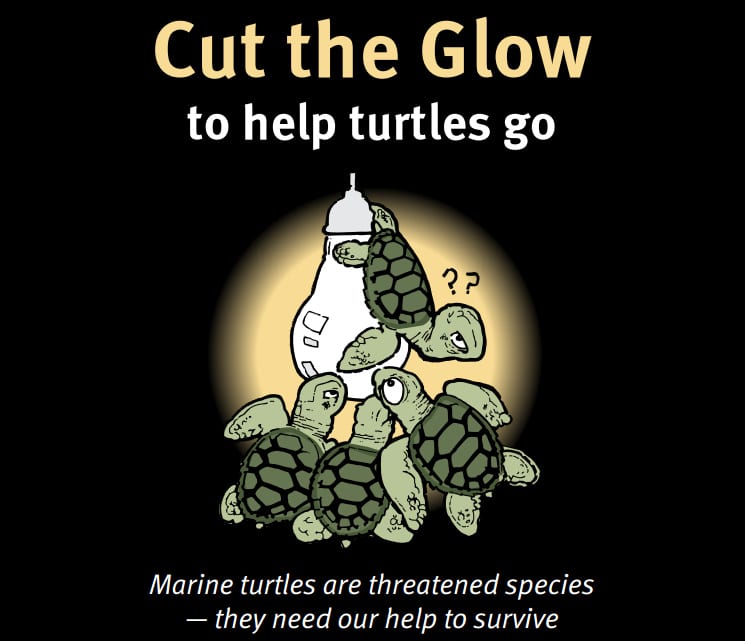
No Comments